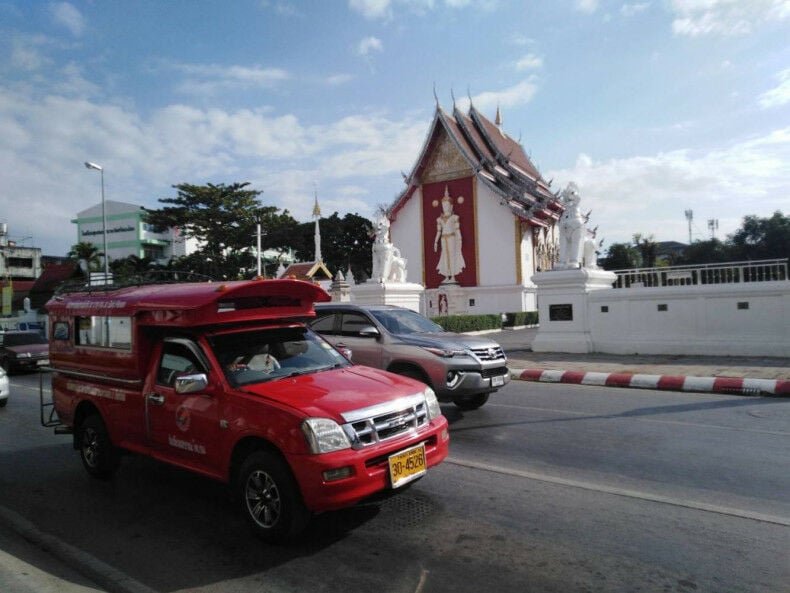Chiang Mai’s rot daeng under threat from ride-hailing apps

Chiang Mai’s iconic rot daeng, or red cars, transport service is under threat as tourists are opting for alternative modes of transport, causing local operators to urge the government for assistance.
The issue was highlighted in an online debate where a Facebook user expressed concerns over the survival of the rot daeng services, which are now facing stiff competition from ride-hailing applications.
The majority of netizens voiced complaints about substandard service and overpricing by the rot daeng drivers. Punlop Saejew, president of the Tourism Council of Chiang Mai, acknowledged the disruption caused by ride-hailing services, which offer clear pricing and booking convenience.
The problem arises when rot daeng drivers are requested to travel to specific locations without assurance of return passengers. This leads to an increase in the fare, as drivers need to cover their fuel costs. Consequently, some drivers refuse passengers or demand higher fares.
According to Punlop, the Department of Land Transport has capped the price at 30 baht per ride. Currently, only 100 rot daeng vehicles are operational in the city, out of 1,000 registered. He suggests that the 30-baht ceiling might need reconsideration in line with current living costs, fuel prices, and evolving tourism behaviour.
Punlop emphasised that rot daeng is an integral part of Chiang Mai tourism, with many foreign tourists keen to try the locally iconic transport. Hotels often arrange private tours for tourists using these vehicles. As such, the authorities should update transport regulations and help regulate this mode of public transport in the province.
Rot daeng drivers
While welcoming the inclusion of rot daeng services in ride-hailing applications, Punlop stressed the need for the government to create more opportunities for these drivers. He proposed that they be allowed to serve tourists from Chiang Mai Airport, offering a cheaper alternative to taxis or air-conditioned buses.
Currently functioning as irregular public buses, Punlop suggests that the authority should allow rot daeng vehicles to operate on regular routes. In the long run, he emphasises the need for a citywide efficient public transport network to elevate Chiang Mai’s tourism standards to match those of Taiwan and Japan, reported Bangkok Post.
Although Chiang Mai has seen improvements in public buses, such as the new RTC City Bus operating between the city centre and the airport, coverage is still insufficient. Without a long-term plan, traffic conditions could worsen, leading to a higher risk of accidents, especially among foreign tourists renting motorcycles.
Latest Thailand News
Follow The Thaiger on Google News:


























